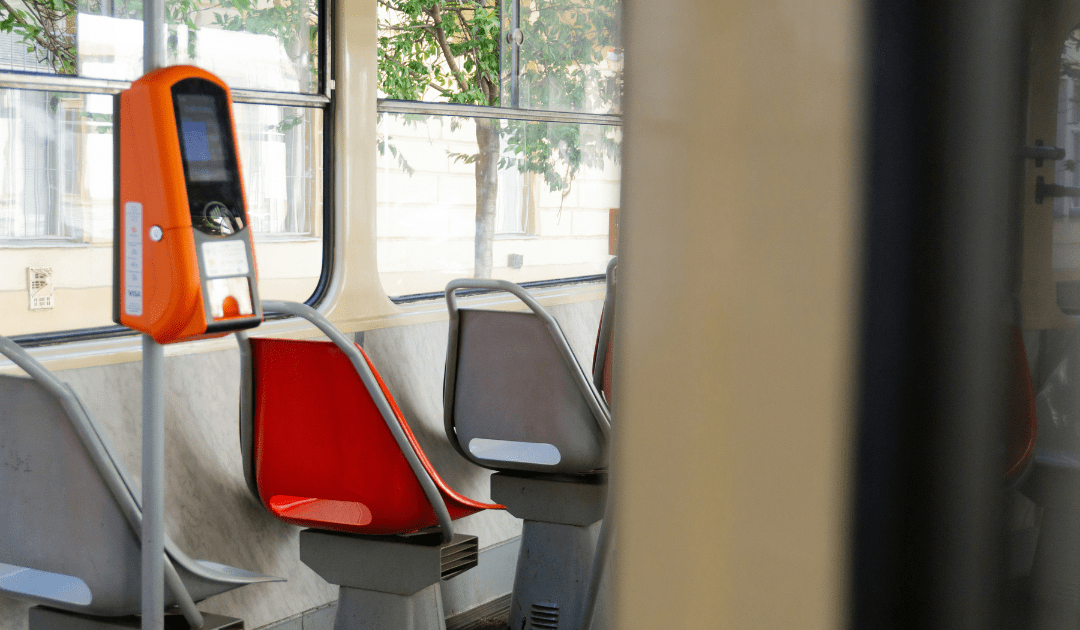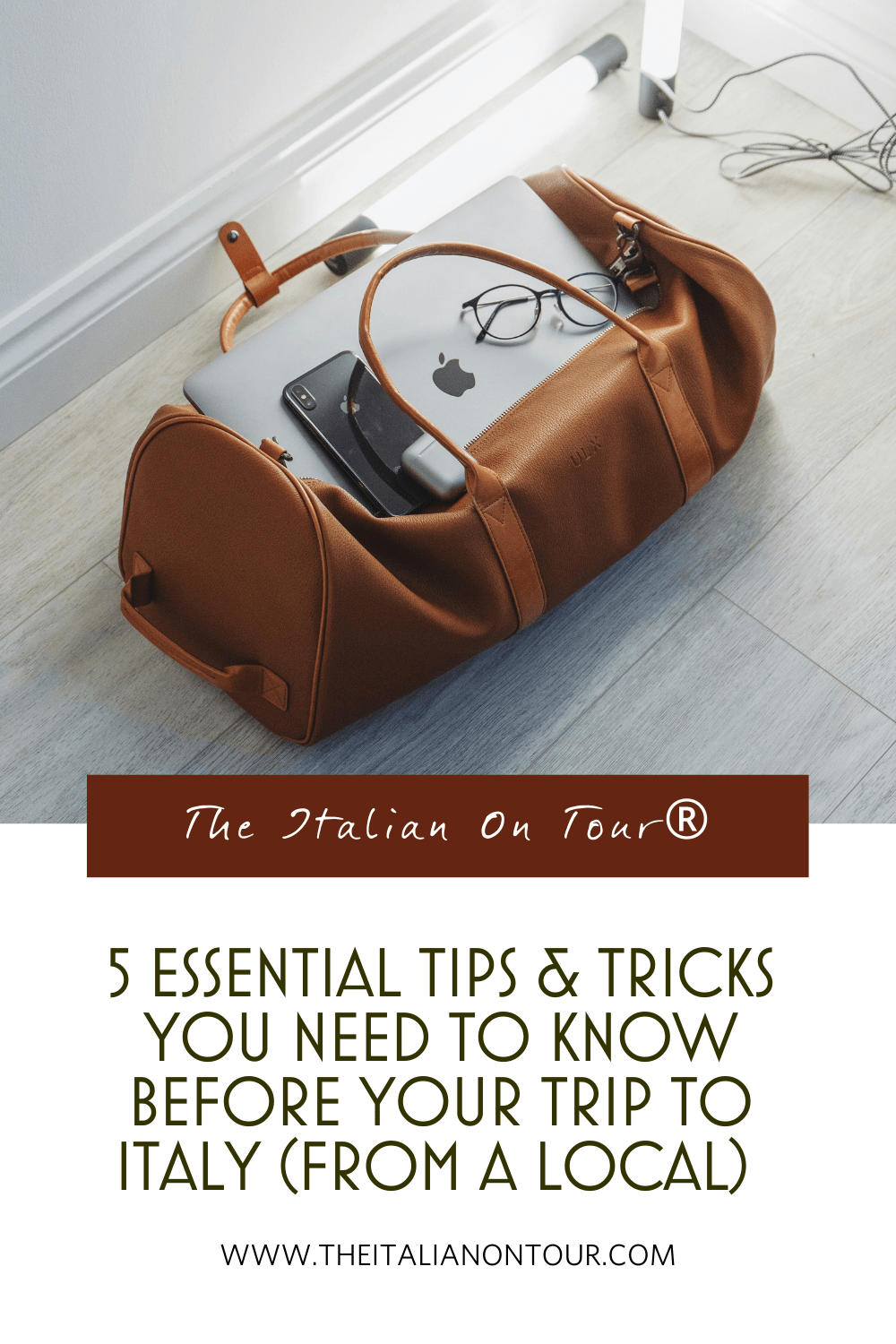Passport, check. Boarding pass, check. Comfortable walking shoes, check.
Having that sinking feeling that you’re forgetting something the moment you finally leave the house for vacation is no fun. The unknowns of International travel can only heighten that feeling, especially if you’re visiting somewhere unlike your home country with a different language, culture, and cuisine!
Since you’ve landed on this page, a dream vacation to Italy is soon to be in your future. Amidst the never-ending to-do list of items to check off before your flight takes off, it can be easy to forget the small things that, if forgotten, could cause major inconveniences during your travels. Ending up in a stressful Italy trip and not the R&R complete with endless plates of pasta, vino, and stunning historical sites.
As Italian travel experts and locals, we want you to know all the essential tips and tricks (that even seasoned travelers can forget) before you go so you can enjoy your time and savor every moment – as Italy is meant to be experienced! Now, instead of not knowing what you don’t know, you can board the plane to your dream vacation feeling confident and ready to start living la dolce vita as soon as your feet touch the ground
Tip #1: Adapters & Electrical Outlets
Here’s something you’ve probably never had to think about traveling domestically: electrical outlets! There’s nothing worse than getting to your hotel, trying to plug in your hair dryer or phone charger, and realizing that your plug isn’t compatible with the electrical outlet. But you can save yourself the headaches by buying your own adapters ahead of time!
Italy primarily uses Type C, Type F, and Type L plugs.
A Universal travel adapter, compatible with all three types of outlets, is a great option to purchase before your trip, especially if you may be traveling to countries in Europe other than Italy in the future. A single-country adapter is also a good option if you’re just visiting Italy and want something more compact and affordable.
Additionally, Italy operates on 230V. If you’re coming from a country with a different voltage, like the United States, which uses 120V, you’ll need to check your device’s voltage rating.
Most modern electronics, like laptops, phone chargers, and cameras, are dual-voltage, meaning they work with 110V and 230V, but you should always double-check! If they aren’t dual-voltage, high-voltage appliances, like hair dryers or straighteners, may require a voltage converter, as plugging them into a 230V outlet could damage them.
You should purchase both an adapter and a voltage converter so you don’t have any trouble using the devices and appliances that make it into your suitcase. You can also purchase an all-in-one adapter/converter.
If you have multiple devices, you may also consider a travel power strip—these can be a lifesaver! Look for one with multiple USB ports and a single adapter so you only need one plug adapter for several devices.
Whatever you decide to purchase for your trip, buy in advance. Options available at local tourist shops or airports are often overpriced and unreliable.

Tip #2: Currency Exchange
Currency exchange in Italy doesn’t have to be a headache if you know where to go and where to get the best rates.
The official currency in Italy is the Euro, so if you’re already in a country that utilizes the Euro, you won’t need to worry about converting. However, it’s important for everyone to notify bank and credit card companies you’ll be traveling to avoid potential declined transactions due to security concerns.
Before you leave, check with your home bank to understand any foreign transaction fees for withdrawals or purchases abroad. Some banks have partnerships with Italian banks, which can save you on fees, or they may waive international fees altogether.
For those coming from other countries across the pond, the easiest and most cost-effective way to get euros is by withdrawing from ATMs – called bancomats in Italy. ATMs in Italy often offer better exchange rates than airport or train station currency exchange counters and may have lower fees.
Pro-Tip: Make sure to use a machine operated by a legitimate bank rather than one in a tourist shop or near popular tourist sites, as these may charge higher fees. Check with your bank before leaving as your bank may have agreements with local banks for preferred rates which means lower fees for you when taking money out at the bancomat (ATM).
However, some ATMs and card readers in shops will offer to “convert” your transaction to your home currency. Always choose to be charged in euros instead, as this avoids extra conversion fees – make sure to double check your receipt to ensure your selection was applied.
In Italy, you should still keep some cash on hand, as many of the smaller shops and family-run restaurants may only accept cash. Cash is also helpful for tips or smaller purchases and essential if you’re looking to shop at the local farmers’ market where you’d be hard pressed to find a fruit and vegetable stand that takes anything but cash.
Overall, it’s important that you save receipts from ATM withdrawals and card transactions, and periodically check your bank statements while traveling. This will help you monitor any unexpected fees or incorrect charges.

Tip #3: Staying Connected – Using Your Phone Abroad
In today’s day and age, most of us rely on our phones to do just about everything, including staying in contact with friends and family, navigation, news, and travel information. The last thing you would want is for your phone to be rendered useless without paying extensive international roaming fees!
If you set things up properly, you can still access all of your phone’s features without paying exorbitant fees to do so.
The first step is to check your carrier’s international data plans. Most carriers offer international data plans for a daily or monthly fee. For example, some US carriers have a daily plan that lets you use your domestic plan while abroad, while others offer monthly packages with set amounts of data.
If you choose this option, it’s important to read the details about call, text, and data limits to avoid accidentally using more than your plan allows. Some plans slow your data after a certain amount of use, so keep track of this if you rely on data-heavy services to avoid fees.
But if you don’t go with this option, make sure to disable data roaming in your phone’s settings to avoid the extremely high rates for data, calls, and texts!
If your phone is unlocked and compatible with European networks, the most cost-effective option for longer stays is to purchase a local SIM card, which can be purchased when you arrive in Italy at airport convenience stores or local telecom shops. This option gives you local rates for data and calls, often with generous packages starting as low as €10-20.
Another similar option is to purchase an eSIM if your phone supports it, which allows you to keep your home SIM card and your phone number while using data at local rates.
There is also the option of relying on Wi-Fi whenever possible during your trip to save data. Most restaurants have free Wi-Fi for the public to use, and most hotels provide free Wi-Fi to their guests.
One essential app that most people can’t live without is Google Maps. If you decide to rely on Wi-Fi, you can download maps for offline use to navigate without data or Wi-Fi. But, it’s important to keep in mind that Google Maps can be unreliable in Italy, so you’ll have to take a paper map if you decide to venture off the well-trodden path.
But, there is another way – choose a small-group Italy tour with private transportation and someone on the inside to take you to the most underrated parts of Italy most tourists won’t get to experience in their lifetime!

Tip #4: Public Transportation
Navigating public transportation in Italy is generally straightforward, but there are some essential tips to ensure a smooth experience—especially when it comes to validating your ticket! Not knowing how to do this can cause unsuspecting tourists fines up to €300.
For most types of transportation, including regional trains, buses, and trams, it’s not enough to simply buy a ticket—you need to validate it before boarding.
Validation is usually done by inserting the ticket into a small machine (often yellow or green) found on train platforms, in station entryways, or at the front of buses and trams. This machine stamps your ticket with the date and time, which activates it for your journey.
Unvalidated tickets are considered invalid, and inspectors may fine you on the spot if they catch you without a validated ticket—even if you just forgot to stamp it! This applies to regional trains, buses, and trams.
If you’re using regional trains, like those operated by Trenitalia or Trenord, you must validate your ticket before boarding on the platform. Look for yellow or green machines marked “Convalida” or “Validation.”
For buses and trams, validate your ticket as soon as you board, using the small machine at the front or near the doors.
Inspectors check tickets randomly, especially on regional trains and public transit in cities. Fines for unvalidated tickets can range from €50 to over €100, and they are generally enforced on the spot. While some may accept a reduced fine if paid immediately, it’s best to avoid the hassle altogether by making sure you validate!
Tickets for high-speed trains, such as those operated by Trenitalia and Italo, are reserved and time-stamped automatically, so they do not need additional validation. Just have your ticket or QR code ready for inspection.
Read our guide to Italian Train Travel for a full rundown of everything you need to know.
Don’t want to spend all your time on the train or fighting the crowds in the big cities? The trains are great for traveling between cities, but if you want to explore the hinterlands of Italy’s hidden regions, like Umbria, Abruzzo, Le Marche, or Veneto, you’ll need to think beyond where the train goes!
When you tour Italy with us, all you have to worry about is getting on the plane to Italy and connecting with us at the meeting point. We’ll act as your guides to translate the Italian experience and take you to beautiful national parks, historic UNESCO landmarks, award-winning wineries, and medieval villages – choose your itinerary!

Tip #5: Rules of the Road & Crossing the Street
The streets of Italy are made for walking, with most Italian cities having existed centuries before cars were ever invented! Because of this, some international tourists living in more car-centric cities may find the flow of foot traffic and car traffic a bit strange at first.
In Italy, crosswalks, or strisce pedonali, are designated for pedestrians, but cars might not always stop automatically. Look for an opportunity and make sure drivers see you before crossing.
At marked crosswalks without traffic lights, it’s customary for pedestrians to start crossing to signal their intent, which often prompts drivers to stop—but make eye contact with drivers to ensure they’re aware of you.
Italy’s cities and towns are filled with scooters and motorcycles, which can sometimes weave in and out of traffic or even onto pedestrian pathways. It’s important to be extra cautious when crossing streets, even if they seem clear, and always double-check for two-wheeled vehicles approaching quickly! And that also includes bicycles – avoid walking in bike lanes to keep it clear for cyclists.
As with anywhere, it’s important to stay aware of your surroundings and follow any posted signage, but as an international traveler in Italy, it’s especially important to stay on your toes to keep up with the sometimes unconventional flow of traffic.
Planning on driving in your time in Italy? Read our 13 Essential Tips!
Now that you’ve got these five essential tips under your belt, you can enjoy your trip to Italy without the headaches or hassles that many first-time (or even seasoned!) tourists forget to account for.
Make sure to grab your FREE Italy Packing List – including seasonal lists for stress-free packing!
Ready to recruit the help of someone on the inside to translate the Italian experience for you and take you to the hidden parts of Italy you won’t see on the well-trodden tourist trail? With small group food & wine tours in regions like Veneto, Umbria, and Marche, the real Italy awaits you – click here to discover your next Italian vacation today!
SAVE THESE 5 ESSENTIAL TIPS & TRICKS FOR YOUR NEXT TRIP TO ITALY

